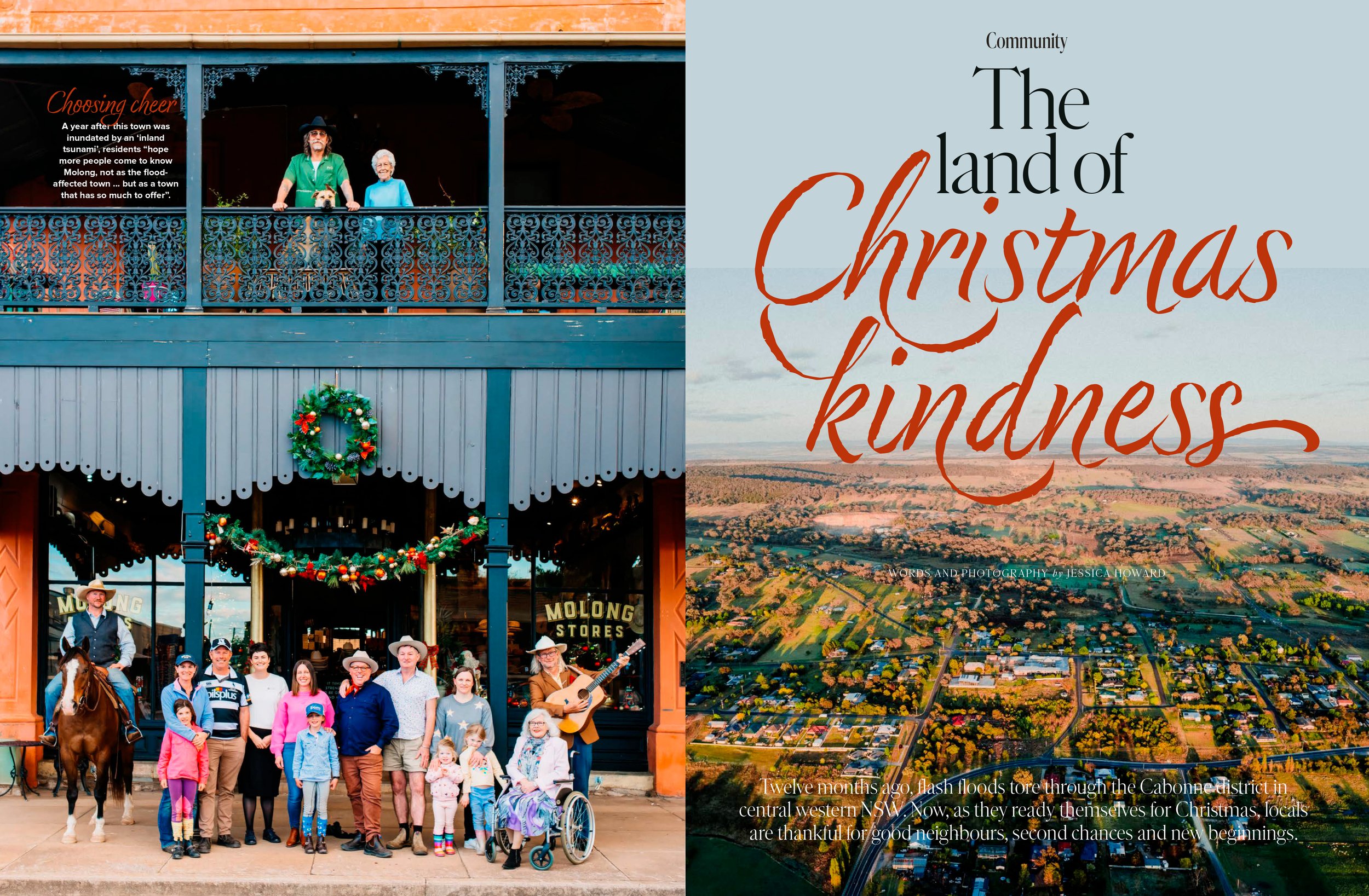It’s been 12 months since flash floods destroyed homes, businesses and took two lives in the Cabonne district of central western NSW. What happened next, as Jessica Howard discovers, has come to define the community.
Rozzi Smith potters around her backyard in the centre of Molong, drifting between sunny marigolds and petunias like purple stars - in pots because the ground’s akin to concrete after so much mud washed in from who knows where. Sound checks waft across the street from the pub, as a train whooshes past on tracks so close to the house it rustles the English oak she stands under. “We were away three months,” she says, tucking her toy poodle R2 under an arm. “We rented at the other end of town for a little while, but we were bored because it was too quiet.” So now home is a temporary housing pod for Rozzi and her partner Paul Mullins, next to what used to be home: a 150-year-old railway cottage that exists only as a battered shell until builders can start work to repair it.







